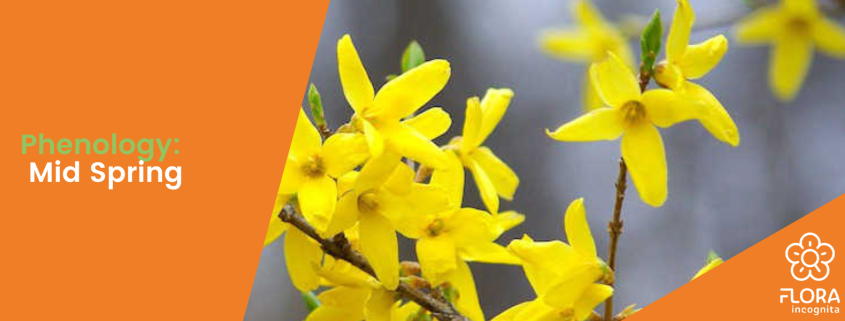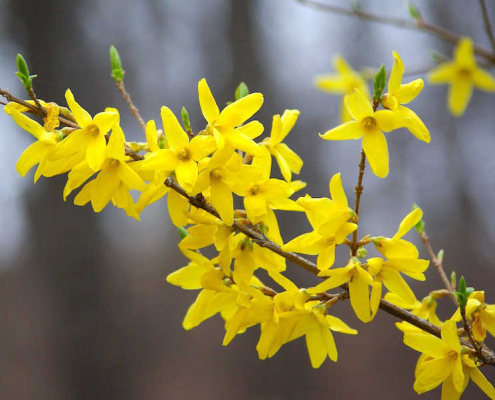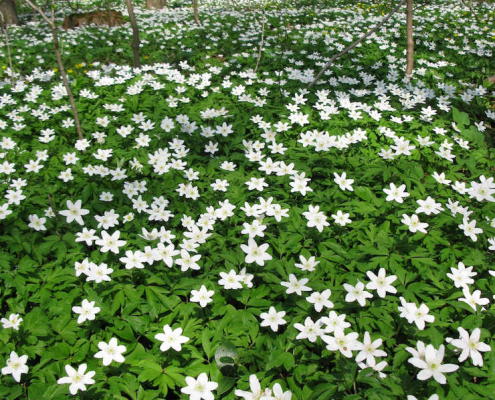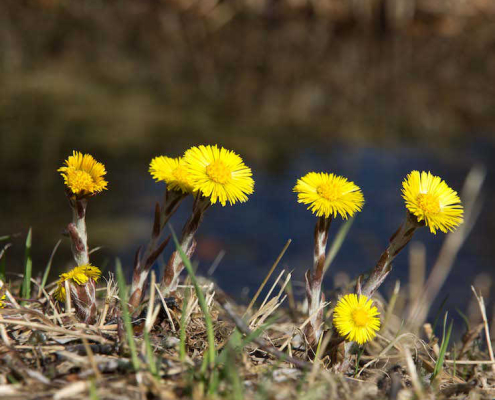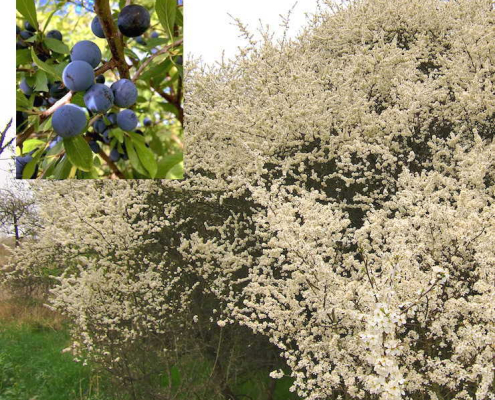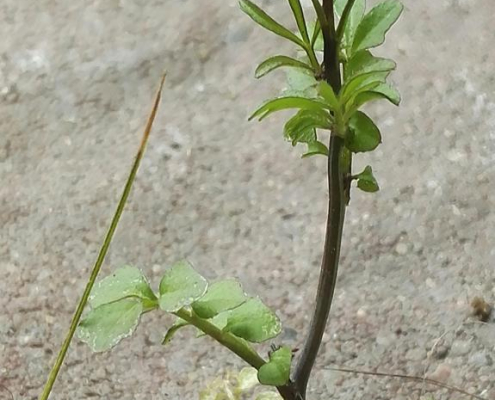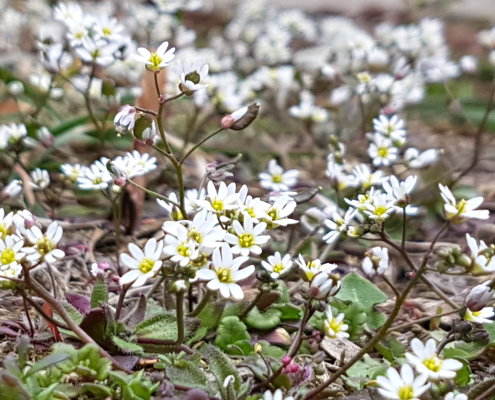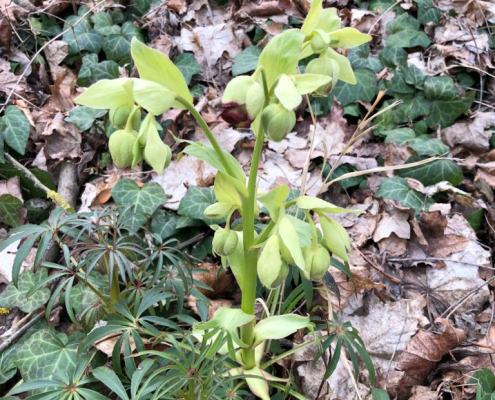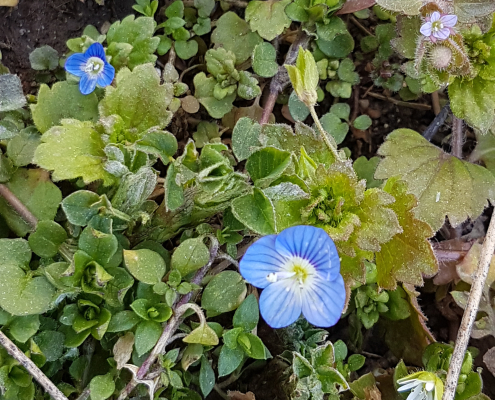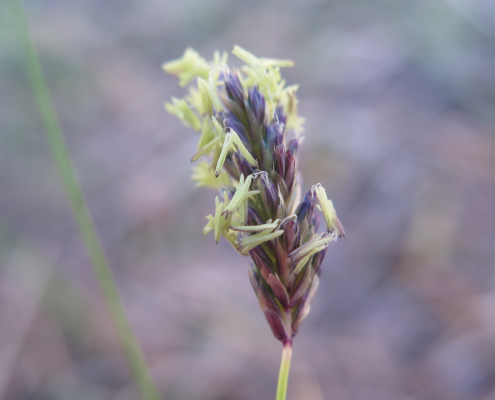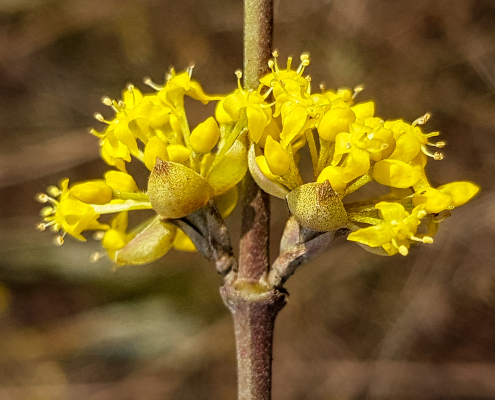Early bloomers of the phenological mid spring
Phenological season: Mid spring
The German Weather Service (Deutscher Wetterdienst – DWD) uses the flowering of forsythia and the beginning of leaf development of gooseberry as indicators for mid spring. In the next weeks, fruit trees open their flowers (cherry, pear) and beech and birch start growing their leaves. To monitor mid spring, we’d love for you to capture the following species by ID’ing them with the Flora Incognita app! Please make sure that your GPS is shared so that we can record your plants’ locations. Thank you!
Wood Anemone – Anemone nemorosa
The wood anemone often grows in large numbers in beech or mixed forests. Even if its flowers attract the first insects, the wood anemone mainly disperses vegetatively – its 30-centimetre-long, creeping rhizome lies about 1 cm below the surface of the soil. Be careful: All plant parts are poisonous!
Coltsfoot – Tussilago farfara
The coltsfoot forms a yellow inflorescence in early spring. Only after they have withered, the large kidney-shaped leaves begin to appear. While still blooming, the small brownish scaly leaves can be photographed as leaves for the app. It may not seem like a special plant, but their flowers are an important marker in terms of phenological monitoring.
Lesser Celandine – Ficaria verna
Lesser celandine or pilewort appears in early spring in various places. Some individuals show brown drawings on their leaves. The blooming period stretches over a long time, in most years until May. What we’re interested in is where and when the first flowers of lesser celandine appear, so look out for it, please!”
Blackthorn – Prunus spinosa
Blackthorn is also often called sloe. Its pure white flowers can be found on forest edges or shrubberies, where the medium-sized bush with its long thorns creates an ideal hiding space for birds. The blue berries ripen late in the year and are usually harvested after the first frost because the cold reduces the bitterness of the fruits. We‘d like to record the phenology of the blackthorn flowering stage and be happy if you contributed.
- Coltsfoot – Tussilago farfara
- Lesser Celandine – Ficaria verna
- Blackthorn – Prunus spinosa
- – Hairy bittercress (Cardamine hirsuta)
- – Draba verna, the spring draba
- stinking hellebore (Helleborus foetidus)
- Veronica
- Sesleria varia
- – Cornelian cherry (Cornus mas)
Even in cities, early bloomers get off to a fast start: warm street pavements ensure that there is already something to discover in many places! Here are a few examples:
- Hairy bittercress (Cardamine hirsuta) – Adapted to disturbed soils, it fruits within a few weeks and then catapults its seeds up to 1.4 metres!
- Draba verna, the spring draba, is a short-lived, few centimetres tall tiny plant among Central European flowering plants. It loves light, lean, dry sites and often mass populates pavement cracks in spring.
- The stinking hellebore (Helleborus foetidus) is named after the unpleasant smell of its leaves. An exciting fact: yeast cultures in the nectar ensure that the temperature in the flower can be up to 6 °C above that of the surrounding area!
- The genus speedwell (Veronica) comprises about 450 species, of which about 50 occur in Germany. The species of the genus are usually quite small, have blue flowers and many of them bloom very early in the year.
- There are also early bloomers among the grasses. Sesleria varia is widespread throughout Germany. However, it only grows on calcareous soils such as stony, dry grasslands. It flowers from March to May.
- Cornelian cherry (Cornus mas) blossoms in March/April, even earlier in mild areas. The flowers, rich in nectar and pollen, are the first food for honey bees and wild bees, in addition to the willow. In autumn, their fruits are very popular with songbirds.

